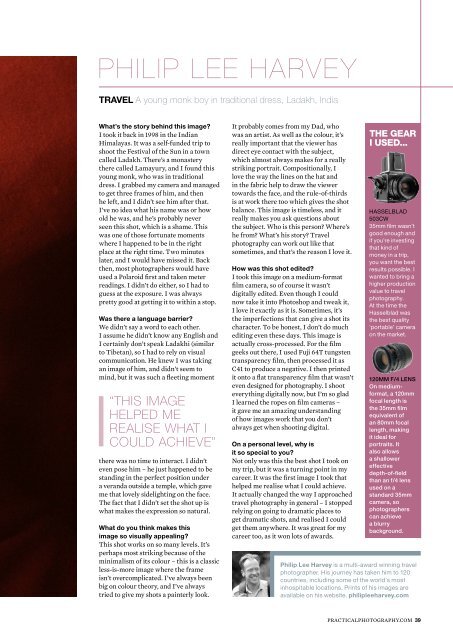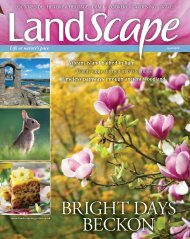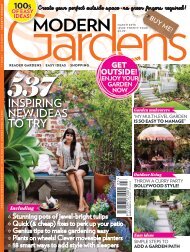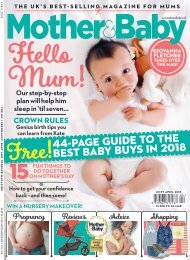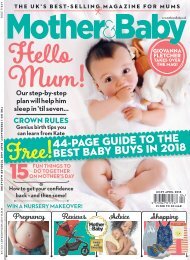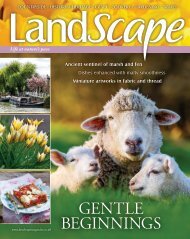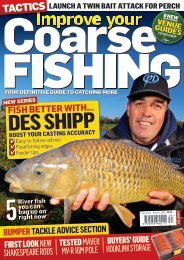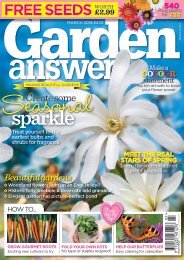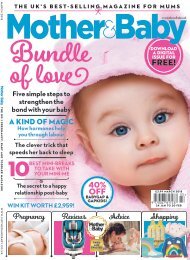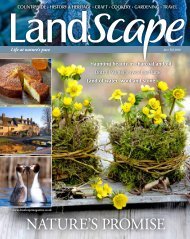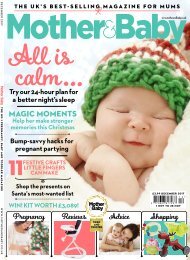Practical Photography
You also want an ePaper? Increase the reach of your titles
YUMPU automatically turns print PDFs into web optimized ePapers that Google loves.
PHILIP LEE HARVEY<br />
TRAVEL A young monk boy in traditional dress, Ladakh, India<br />
What’s the story behind this image?<br />
I took it back in 1998 in the Indian<br />
Himalayas. It was a self-funded trip to<br />
shoot the Festival of the Sun in a town<br />
called Ladakh. There’s a monastery<br />
there called Lamayury, and I found this<br />
young monk, who was in traditional<br />
dress. I grabbed my camera and managed<br />
to get three frames of him, and then<br />
he left, and I didn’t see him after that.<br />
I’ve no idea what his name was or how<br />
old he was, and he’s probably never<br />
seen this shot, which is a shame. This<br />
was one of those fortunate moments<br />
where I happened to be in the right<br />
place at the right time. Two minutes<br />
later, and I would have missed it. Back<br />
then, most photographers would have<br />
used a Polaroid first and taken meter<br />
readings. I didn’t do either, so I had to<br />
guess at the exposure. I was always<br />
pretty good at getting it to within a stop.<br />
Was there a language barrier?<br />
We didn’t say a word to each other.<br />
I assume he didn’t know any English and<br />
I certainly don’t speak Ladakhi (similar<br />
to Tibetan), so I had to rely on visual<br />
communication. He knew I was taking<br />
an image of him, and didn’t seem to<br />
mind, but it was such a fleeting moment<br />
“THIS IMAGE<br />
HELPED ME<br />
REALISE WHAT I<br />
COULD ACHIEVE”<br />
there was no time to interact. I didn’t<br />
even pose him – he just happened to be<br />
standing in the perfect position under<br />
a veranda outside a temple, which gave<br />
me that lovely sidelighting on the face.<br />
The fact that I didn’t set the shot up is<br />
what makes the expression so natural.<br />
What do you think makes this<br />
image so visually appealing?<br />
This shot works on so many levels. It’s<br />
perhaps most striking because of the<br />
minimalism of its colour – this is a classic<br />
less-is-more image where the frame<br />
isn’t overcomplicated. I’ve always been<br />
big on colour theory, and I’ve always<br />
tried to give my shots a painterly look.<br />
It probably comes from my Dad, who<br />
was an artist. As well as the colour, it’s<br />
really important that the viewer has<br />
direct eye contact with the subject,<br />
which almost always makes for a really<br />
striking portrait. Compositionally, I<br />
love the way the lines on the hat and<br />
in the fabric help to draw the viewer<br />
towards the face, and the rule-of-thirds<br />
is at work there too which gives the shot<br />
balance. This image is timeless, and it<br />
really makes you ask questions about<br />
the subject. Who is this person? Where’s<br />
he from? What’s his story? Travel<br />
photography can work out like that<br />
sometimes, and that’s the reason I love it.<br />
How was this shot edited?<br />
I took this image on a medium-format<br />
film camera, so of course it wasn’t<br />
digitally edited. Even though I could<br />
now take it into Photoshop and tweak it,<br />
I love it exactly as it is. Sometimes, it’s<br />
the imperfections that can give a shot its<br />
character. To be honest, I don’t do much<br />
editing even these days. This image is<br />
actually cross-processed. For the film<br />
geeks out there, I used Fuji 64T tungsten<br />
transparency film, then processed it as<br />
C41 to produce a negative. I then printed<br />
it onto a flat transparency film that wasn’t<br />
even designed for photography. I shoot<br />
everything digitally now, but I’m so glad<br />
I learned the ropes on film cameras –<br />
it gave me an amazing understanding<br />
of how images work that you don’t<br />
always get when shooting digital.<br />
On a personal level, why is<br />
it so special to you?<br />
Not only was this the best shot I took on<br />
my trip, but it was a turning point in my<br />
career. It was the first image I took that<br />
helped me realise what I could achieve.<br />
It actually changed the way I approached<br />
travel photography in general – I stopped<br />
relying on going to dramatic places to<br />
get dramatic shots, and realised I could<br />
get them anywhere. It was great for my<br />
career too, as it won lots of awards.<br />
THE GEAR<br />
I USED...<br />
HASSELBLAD<br />
503CW<br />
35mm film wasn’t<br />
good enough and<br />
if you’re investing<br />
that kind of<br />
money in a trip,<br />
you want the best<br />
results possible. I<br />
wanted to bring a<br />
higher production<br />
value to travel<br />
photography.<br />
At the time the<br />
Hasselblad was<br />
the best quality<br />
‘portable’ camera<br />
on the market.<br />
120MM F/4 LENS<br />
On mediumformat,<br />
a 120mm<br />
focal length is<br />
the 35mm film<br />
equivalent of<br />
an 80mm focal<br />
length, making<br />
it ideal for<br />
portraits. It<br />
also allows<br />
a shallower<br />
effective<br />
depth-of-field<br />
than an f/4 lens<br />
used on a<br />
standard 35mm<br />
camera, so<br />
photographers<br />
can achieve<br />
a blurry<br />
background.<br />
Philip Lee Harvey is a multi-award winning travel<br />
photographer. His journey has taken him to 120<br />
countries, including some of the world’s most<br />
inhospitable locations. Prints of his images are<br />
available on his website. philipleeharvey.com<br />
PRACTICALPHOTOGRAPHY.COM 39


